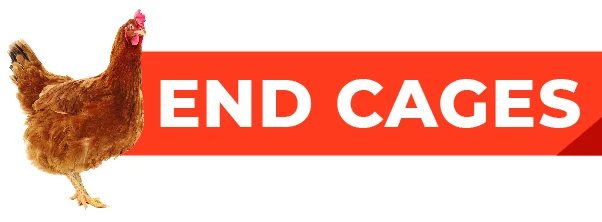




With caged egg inventories at their lowest in nearly two decades, it’s clear: the future of eggs is cage-free. The time for egg businesses to leave cages behind is now.

The egg industry is at a crossroads. For the first time in nearly two decades, the inventory of caged eggs has reached a historic low. This transformation is not just a blip—it’s a direct outcome of shifting consumer preferences, evolving corporate commitments, and the lessons learned from recent supply chain disruptions, most notably the devastating bird flu outbreaks of 2025.
As leading food brands and retailers know, consumer demand for cage-free eggs is no longer a niche concern. The past decade has seen a fourfold increase in the share of US hens living outside cages, jumping from just 10% in 2014 to nearly 44% today. In practical terms, this means that almost half of the egg-laying flock is already cage-free—and the momentum is only building.
For producers and suppliers, the message in the data is unmistakable. Companies across the food sector are making promises to remove cages from their supply chains—and they are following through. As more brands uphold these commitments, caged eggs are rapidly becoming obsolete, both in the eyes of consumers and in the realities of the marketplace.
This shift has been further accelerated by the bird flu crisis. Over 125 million hens have been lost in the US since the start of the bird flu outbreak. The crowded, high-stress conditions of traditional battery cages have proven not only inhumane but also a clear risk factor for disease transmission. As the industry rebuilds, operators face a pivotal choice: reinvest in outdated, high-risk cage systems, or seize the opportunity to transition to cage-free—a move that’s increasingly viewed as the only viable path forward.
Cage-free production is a matter of ethics, and it’s a matter of business resilience. Retailers are already favoring cage-free eggs in their assortments, and the market share for caged eggs is shrinking fast. Re-entering the egg market with caged systems risks not only another round of costly disease outbreaks but also the possibility of being left behind as more states and major buyers adopt cage-free policies. The numbers tell the story: as of April 2025, cage-free flocks are at their highest share ever, while caged inventories are the lowest they’ve been since 2007.
There is also a reputational dimension. Consumers are more informed than ever, and transparency is the expectation, not the exception. Companies that proactively adopt cage-free systems are better positioned to meet retailer and end-consumer expectations, maintain supply chain stability, and protect their brand value. By contrast, those who remain tied to cages risk negative media attention, regulatory scrutiny, and eroding customer trust.
The industry’s progress to date is the result of pressure and partnership with advocates, but it’s also a clear reflection of the direction the market is heading. As more companies report on their progress and make good on their promises, cage-free is rapidly becoming the industry standard.
This is not the time to look backward. For egg producers weighing how to rebuild after recent losses, investing in cage-free is not just preferable—it’s essential for long-term growth, risk management, and alignment with the evolving values of the market. The business case for cage-free has never been stronger.
Cage-free is the business-smart future
With caged inventory at an all-time low and cage-free systems on the rise, the industry stands at a moment of opportunity. Producers and retailers who choose to go cage-free now are not only safeguarding animal welfare—they are future-proofing their businesses against the risks and disruptions that have plagued the industry for years.
Consumers, corporations, and regulators are all moving in the same direction. The question isn’t whether cage-free will become the new normal, but how quickly your business will adapt to lead—or be left behind. Now is the time to make the transition that will define the next era of egg production.
If your company is considering how to navigate this transition, now is the time to act. The market is ready, the infrastructure is growing, and the risks of delay only increase. Seize the opportunity—because the future of eggs is clear, and it’s cage-free.
 Michael Windsor
Michael Windsor






